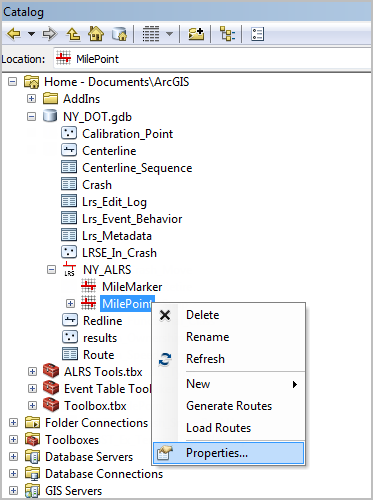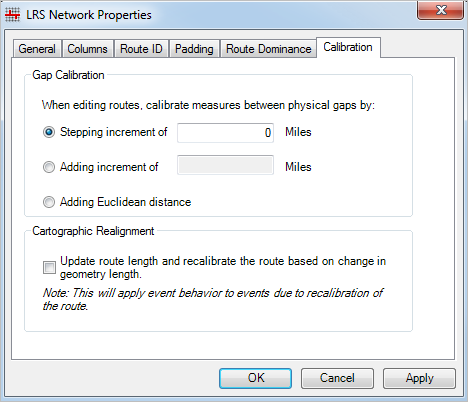When creating an LRS Network, you have the option to choose how centerlines with physical gaps are calibrated when creating or editing routes using the Esri Roads and Highways editing tools. Three methods are available based on how you want routes with physical gaps created using the Create new LRS Network wizard to calibrate the following:
- Euclidean distance
- Stepping increment
- Adding increment
Each method will produce a different calibration value for a route with physical gaps created using the Roads and Highways editing tools. The example below shows the calibration of a route created from two centerlines with a physical gap in the center for each calibration method.
The example below shows the calibration of a route with a retirement from measures 1 to 1.5 and recalibration downstream introduced a physical gap for each calibration method..

Stepping increment
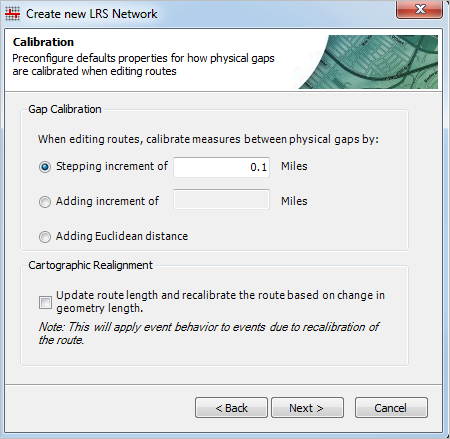
When creating an LRS Network, the final step in the wizard is to select a method for how routes being edited with physical gaps are calibrated. A stepping increment allows you to define a value that measures will adjust, or step, at each physical gap in the route. This ensures that the same measure is not present on the route at two different spatial locations, while preserving the true length of the polyline segments as the From and To measures of the route. The increment value you define must be numeric and can include decimals. To produce a route with no gap in calibration measures, set the increment value to 0.
Adding increment
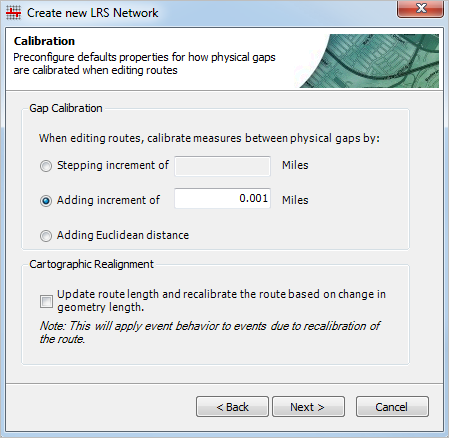
When creating an LRS Network, the final step in the wizard is to select a method for how routes being edited with physical gaps are calibrated. An adding increment allows you to define a value to be added to each measure of a route at each physical gap, in addition to the total length of the From and To measures of the route. This ensures that the same measure is not present on the route at two different spatial locations. In addition, the From and To measures of the route will be greater than the sum of the length of all the polyline segments that compose the route. The increment value you define must be numeric and can include decimals. Defining an increment of 0 will produce a route with no gap in calibration measures at physical gaps.
Euclidean distance
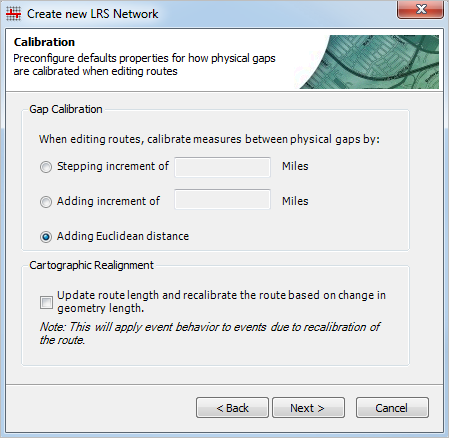
When creating an LRS Network, the final step in the wizard is to select a method for how routes being edited with physical gaps are calibrated. The Euclidean distance option will calculate and add the Euclidean, or straight-line, distance at each physical gap along an edited route. The calculated Euclidean distance is also added to the total length of the segments that compose the route to produce the From and To measures of the route.
Changing the calibration method for creating routes with physical gaps
The Gap Calibration tab on the LRS Network Properties dialog box allows you to change the method for calibration of physical gaps in edited routes. Right-click the ALRS, click Properties, and click the Gap Calibration tab. Select the method for the LRS Network and click OK. The calibration method for gapped routes that are edited can be changed as many times as necessary.